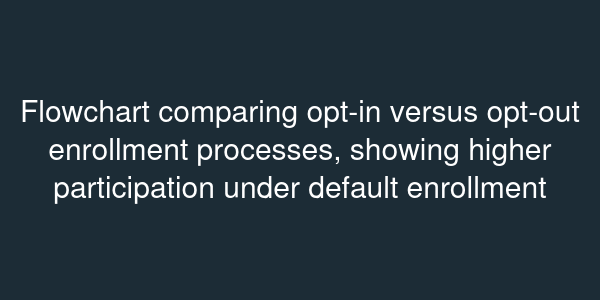Nudges and Choice Architecture
Essential Questions
- What is choice architecture and how do nudges operate?
- How do defaults, reminders, and simplification change behavior?
- What ethical guidelines govern behavioral policy interventions?
Overview
You are asked to increase retirement enrollment without mandating participation. Behavioral policy suggests using a nudge: set the default to "enroll" while allowing opt-outs. Choice architecture shapes decisions by organizing the context in which choices are made.
This lesson surveys nudge types, uses case studies to illustrate impact, and discusses ethical considerations of libertarian paternalism.
Anatomy of a Nudge
Thaler and Sunstein define a nudge as any aspect of choice architecture that predictably alters behavior without forbidding options or significantly changing incentives. Defaults are potent. When 401(k) enrollment changed from opt-in to opt-out, participation rates jumped from about 60% to over 90% (Madrian and Shea).
Mathematically, if the probability of enrolling is where if default is enroll, estimates find large and positive. Reminders, simplification, and feedback serve as other nudges by lowering cognitive costs.

Case Studies
Organ donation systems illustrate default effects: presumed-consent countries consistently record donor rates above 90%, far exceeding the 15% range of opt-in countries. Home energy reports that highlight neighbors' average consumption reduce usage by about 2%, demonstrating the motivational power of social norms. Personalized assistance on college financial-aid forms simplifies complex paperwork and dramatically increases FAFSA completion, showing how information design nudges action.
Ethics and Design
Nudges raise questions about autonomy. Libertarian paternalism argues that since choice environments are unavoidable, they should be designed to help people achieve their own goals. Transparency, easy opt-outs, and ongoing evaluation are ethical pillars.
Designers test nudges using randomized controlled trials and track heterogeneous effects to avoid unintended harm. In finance, auto-escalation of savings needs safeguards to prevent hardship. In health, reminders should respect privacy.
Implementing Choice Architecture
When building digital products, you can apply nudges through interface design: highlight recommended options, provide progress feedback, and schedule reminders. In public policy, pair nudges with structural reforms; for example, default enrollment in green energy plans accompanied by accessible information.
Understanding nudges equips you to build systems that align with human psychology while honoring choice.